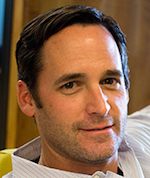 Kevin McLaughlin |
For startups, the evolution of PR is a lot like sales: until you earn a reputation for a great product or service and achieve some semblance of market traction, most of your time is spent hustling with outbound campaigns and leads.
Like many of your startup peers, you’re jumping headlong into the funnel only to find yourself clogged in the bottleneck: fighting for attention, validation and wins in order to slip through to land that coveted client or lone media placement.
It can be exhausting. It can feel thankless. But it’s all part of the startup gig, and that’s what you signed up for. Still, success stories surround you. Tales of rapid growth, overflowing sales and enviable media and market attention abound. These are the juggernauts, the wunderkinds, the disruptors and unicorns that you aspire to become, companies that’ve managed to flip the funnel where inbound outpaces outbound sales efforts.
While there isn’t a roadmap to follow that’s tailor-made for your company, there are underlying principles, strategies and tactics that can and will get you there, helping you to cross the chasm between startup mode (cracking the code on market fit) and growth mode (putting your foot to the floor to achieve scale).
Just as your operational priorities, strategies and tactics change in accord with the various life stages of your company, so should your PR program. For the vast majority of companies, that trajectory is the same: first, asserting your brand as “part of the conversation;” next, becoming a regular on the short list allows your brand to help “shape the conversation;” and ultimately, climbing to a leadership position in your market empowers your brand to “lead the conversation.”
Before your brand can progress along that arc, however, you’ll need to execute on your startup PR plan. While innovation and provocation may help in creating the sizzle as a startup, it’s the creation of predictable, measurable value that makes the meal, which applies to sales and product marketing as much as PR. As a high-level guide, you can consider this two-phase approach to architecting a PR funnel flip for your brand.
Phase I: plan and project
Coming out of the gates, you need to get on the radar of your target media, establish your brand positioning and drive home your narrative in a concise, compelling way. In this phase, it’s all about making noise. Here are a few key components:
Audit and emulate: You’ve already gone through the process of crafting your positioning, mission statement and value proposition as you built your business plan. Now it’s time to map those tenets to your PR plan. This doesn’t happen in a vacuum; you can’t force-feed your agenda and brand-driven vernacular to the media. First you need to survey the landscape from the inside out: hear what your peers are saying, how they’re packaging it and how they develop their ideas into storylines. Conversely, taking a view from the outside in, examine which media are covering topics (not just competitors) relevant to your business, and with what tone or style. The exercise and findings of this audit should inform how to turn your PR assets into stories that will not only get coverage, but also help to push your corporate agenda.
Package: Understandably, most emerging companies have smart, accomplished people throughout the ranks, from founders to whipsmart engineers to creative geniuses. But it’s not enough to simply have a compelling point of view or proven best practices. These nuggets of valuable insight need to be packaged into actual stories, with the structure, tone and takeaways appealing to the press, and more importantly, their reading or viewing audiences.
Pitch: The decisions about the way you pitch and to whom are informed by your audit. By now, you should know that blasting press lists aren’t the way to go. Sure, to some degree it’s a numbers game, but the only way to maintain a healthy run of coverage is to target and tailor your pitches. Again, take the mindset of the reading or viewing audience and work backwards from your dream story to a concise and compelling pitch that can catalyze your big idea into your dream feature.
Build: In the early stages, it’s all about momentum. While you’re hustling on the PR front, you’re building a library of informative content coupled with initial press relationships that you can and should nurture over time. The biggest mistake many companies make is to engage only with the press when they’re seeking coverage. While you don’t want to flood inboxes and social feeds, you do want to maintain a two-way connection. Offer email, DMs, shares and likes with meaningful commentary, whether that means reinforcing their findings or points-of-view, or pointing out something they missed. All of these touchpoints go a long way in maintaining visibility and strengthening relationships, so when you actually do have news or commentary that’s coverage worthy, you’ll have a receptive audience that will at least provide feedback if not include your company in a story.
Phase II: project and protect
Now that you have achieved validation, it’s time to cement the reputation as the trusted, proven and acknowledged market leader. This also means you need to defend and protect — both proactively and reactively — that reputation and leadership position you’ve worked so hard to establish. If you’re going to accomplish “flipping the funnel,” these aspects of your PR program are critical:
Expand: It’s time to get more deeply entrenched with media that matter most; those in the mainstream and industry-trade that see the market in a similar way, know your brand’s capabilities and value proposition and have an influential voice. At the same time, you’ll need to expand your reach as well, to steadily broaden the exposure across the outlets and platforms that your experience and marketing research has proven to reach, engage, influence, and activate your target audiences. Two key measurements here to track performance are sentiment and share of voice (for the latter, this applies to the macro view across the marketplace, as well as the micro view within each piece of coverage and relative to other brands).
Strengthen: You need to broaden your PR arsenal while increasing tempo. While in the first phase of the PR program, your approach as an emerging company was mainly one of a “hunter” — tracking and pursuing media targets with outbound pitching tailored to their tastes — you now need the additional role of a trapper, which requires baiting contacts with compelling content like data findings, analytics, playbooks, case studies, surveys and third-party studies. This type of content can travel, maintain relevancy over longer time periods and cascade throughout your marketing mix as sales triggers for direct marketing, account-based marketing, content syndication and social media as well as PR.
Elevate: The meek may inherit the Earth, but they’ll not likely appear on stage at SXSW, CES, Web Summit, Consensus, Collision or any number of notable, influential industry events. Press traction helps build the type of momentum and recognition that can help expand your brand’s platform for promotion, namely with speaking opportunities at the events where your target audiences go to learn, explore, network and often put their budgets to work. These appearances also become prompts for pre- and post-event sales activities to amplify engagement and activation directly related to your participation on panels, roundtables, fireside chats and keynotes. Additionally, a dedicated awards program can continue to validate your offerings, market leadership, industry-leading innovation and customer benefits as well as deepen the moat to protect your brand from direct competitors and new market entrants.
Defend: Anything of value requires protection of some level, and your brand is no different. Don’t make the mistake of installing the security system after the first break in or threat. The bigger your brand gets, the bigger the target you become for detractors and competitors as much as fans, customers and partners. Because of this, it’s important to proactively address any company or product weaknesses in your communications plan.
This isn’t an admission of weakness as much as it’s intended to provide a natural connection from where you are today to where you’re headed by offering additional capabilities and benefits that your market demands or expects to require in the future. It’s better for you to control that narrative rather than allow a competitor to position it as a slight. Similarly, you must also plan for the worst with an honest vulnerability assessment and a framework to manage a crisis, starting with the protocols for a “lock down” to control and limit outside access to information (including casual employee remarks), and progressing to key talking points, statements for escalating situations and all of the actions required of a reliable crisis-recovery plan, with the goal of owning your narrative, minimizing public alarm and mitigating reputational damage.
With proper planning and execution, you can achieve the multiplier effect of a strong, well-planned and agile PR effort, ultimately ascending from being part of the conversation to leading the conversation. Remember, there’s no magic bullet for PR success: it takes persistence, determination and a commitment to storytelling along with a best practices approach to maintaining the right tempo of the right campaigns for your company’s stage of growth. So, arm yourself with an arsenal of content, spokespeople, data and media intelligence, and before long, you’ll be enjoying the view as the press dive headlong into the funnel in their collective scramble to get to you.
***
Kevin McLaughlin is Managing Director at ICR. Follow him @kmclaughlin or @ICRPR, connect on LinkedIn, or find out more at www.icrinc.com.


 Abandon traditional content plans focused on a linear buyer progression and instead embrace a consumer journey where no matter which direction they travel, they get what they need, stressed marketing pro Ashley Faus during O'Dwyer's webinar Apr. 2.
Abandon traditional content plans focused on a linear buyer progression and instead embrace a consumer journey where no matter which direction they travel, they get what they need, stressed marketing pro Ashley Faus during O'Dwyer's webinar Apr. 2. Freelance marketers and the companies that hire them are both satisfied with the current work arrangements they have and anticipate the volume of freelance opportunities to increase in the future, according to new data on the growing freelance marketing economy.
Freelance marketers and the companies that hire them are both satisfied with the current work arrangements they have and anticipate the volume of freelance opportunities to increase in the future, according to new data on the growing freelance marketing economy. Home Depot's new attempt to occupy two market positions at once will require careful positioning strategy and execution to make it work.
Home Depot's new attempt to occupy two market positions at once will require careful positioning strategy and execution to make it work. Verizon snags Peloton Interactive chief marketing officer Leslie Berland as its new CMO, effective Jan. 9. Berland succeeds Diego Scotti, who left Verizon earlier this year.
Verizon snags Peloton Interactive chief marketing officer Leslie Berland as its new CMO, effective Jan. 9. Berland succeeds Diego Scotti, who left Verizon earlier this year.  Norm de Greve, who has been CMO at CVS Health since 2015, is taking the top marketing job at General Motors, effective July 31.
Norm de Greve, who has been CMO at CVS Health since 2015, is taking the top marketing job at General Motors, effective July 31.


 Have a comment? Send it to
Have a comment? Send it to 
No comments have been submitted for this story yet.